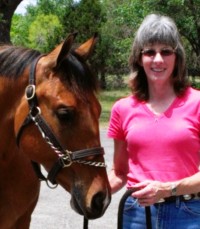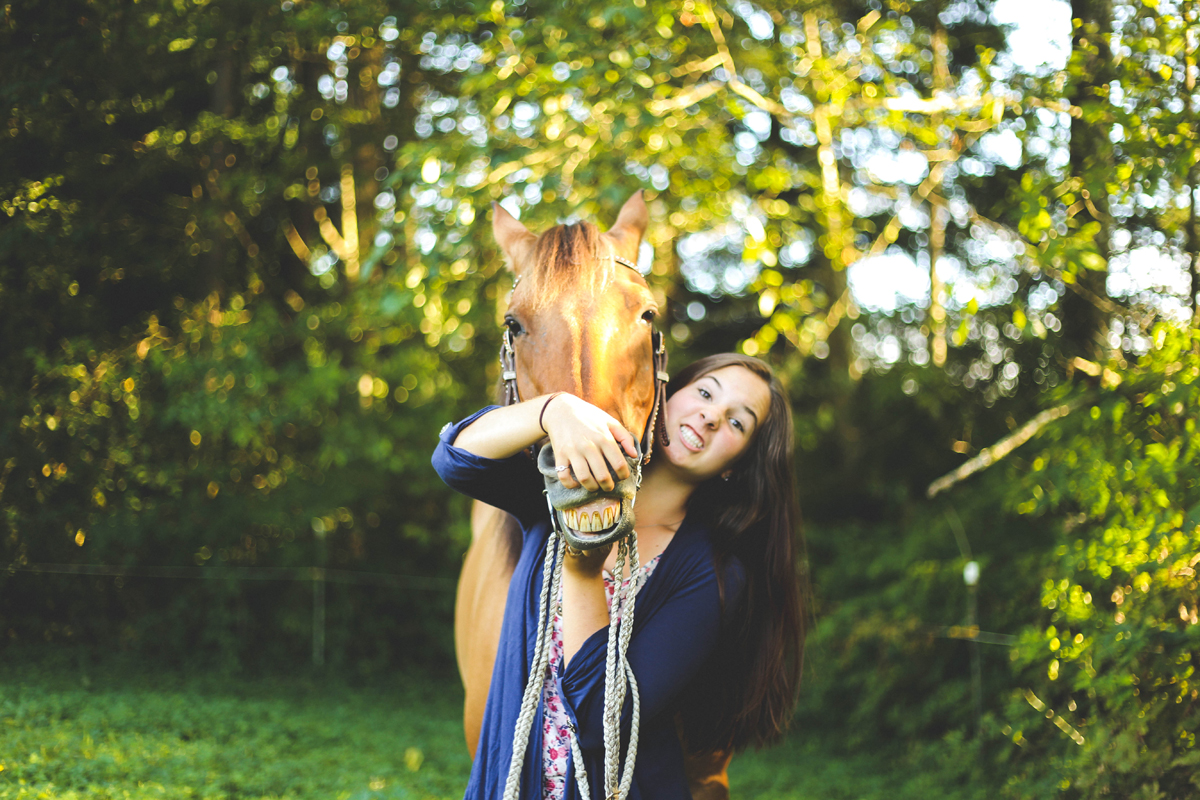by Eleanor Blazer
Is your horse getting a little “long in the tooth”? This expression usually means the horse (or person) is getting old, but even young horses can have teeth that are too long or have sharp points. It’s very important to understand how horse’s teeth change as they mature.
Horse’s teeth do not grow, they erupt. The entire permanent equine tooth is below the gum line. As a horse chews the exposed surface of the tooth is worn away and it continues to emerge, maintaining the needed length. By the time the horse is a senior only a stub will be visible, if there is any remaining at all.
A foal’s teeth will start to erupt within a week of birth. The first set to appear will be the four incisors which are located in the middle – two on the top and two on the bottom. The second set (intermediate) will appear a week or two later and the third set (corner incisors) erupt at about six months of age. There will be a total of 12 teeth in the front. The premolars will also erupt at about two or three weeks of age; there are three on each side – top and bottom – for a total of 12 teeth in the back.
Over the next four or so years the permanent teeth emerge and these erupting teeth will push the shorter baby teeth out. Baby teeth are sometimes called caps because they sit on top of the permanent tooth until they shed. At the same time, 12 more additional permanent molars will erupt. An adult mare usually has 36 permanent teeth and an adult male will usually have 40. Males usually develop canine teeth, adding to the number of teeth present. Some mares will also show canine teeth, but these are small and short rooted.
Young growing horses need to have their teeth examined regularly. There are times when the cap may not shed or it becomes lodged in the gum and requires removal. The lower jaw of the horse is slightly narrower than the upper and moves back and forth, grinding the lower teeth against the upper during the chewing process. The surface of the teeth is worn away in this manner and eruption occurs in order to maintain the needed length. As long as there is full lateral movement of the lower jaw, and the diet is “horse friendly,” the teeth should wear properly but that is not always the case.
Wild horses with poor teeth died and did not reproduce. In contrast, most breeding programs do not take into consideration the structure of the jaw and quality of the teeth. Processed feeds now allow horses with genetic tooth defects to lead productive and useful lives. In most cases, the owners are not aware of a genetic tooth problem. In addition, most domesticated horse diets are not natural. Eating hay from a manger instead of grazing does not allow the incisors (front teeth) to be worn down. The molars are still being worn away, but not the incisors. Eventually the molars will not meet properly because the incisors are too long.
The feeding of grain and processed commercial products instead of forage can also affect the molars. When a horse eats long stem fiber (hay or grass), he grinds the material with a big wide lateral movement of the lower jaw. This allows the lower teeth to grind against the upper teeth and wear evenly. If grains, chopped forage, pellets and processed feeds make up the majority of the diet the horse chews with a short, quick lateral movement. The teeth do not wear evenly and long points will develop. Another cause of a long tooth is a missing corresponding tooth. In this case, there is nothing for the remaining tooth to wear against, but it will continue to erupt causing chewing problems.
If you want your horse to become long in the tooth because of age, be sure to maintain dental care by regularly having your horse seen by an equine dentist or veterinarian.
Proper nutrition and management practices can prevent many problems associated with caring for horses. You can learn how to provide your horse with a better life-style by taking the online course “Nutrition for Maximum Performance” taught by Eleanor Blazer. Earn a certificate or work toward a Bachelor of Science degree in equine studies: horsecoursesonline.com.

Eleanor Blazer was raised training and caring for horses. She learned to ride and care for the horses her family bought and sold. Many of these horses required improved nutrition when they arrived for training. Eleanor’s experience and research has benefited both horses and horse lovers in the field of equine nutrition. An equine nutrition consultant, based in Bulverde, Texas, she keeps busy doing equine nutrition consultations, conducting seminars, and speaking to youth groups about horse care and nutrition. Eleanor is the author of the syndicated column The Way of Horses. She has more than 20 years experience helping and being a mentor to those wanting to know how to provide the very best care and nutrition for our special friend – the horse.






